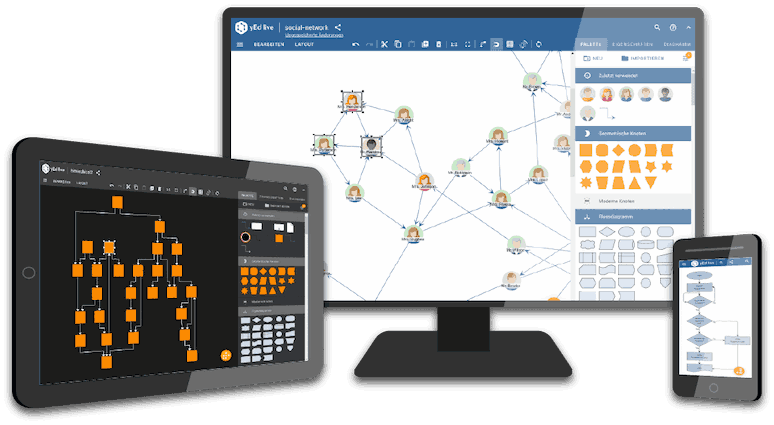

Within yEd, the URL of a selected graph element can be opened using ‘Go to URL’ from the context menu or the ‘View’ menu. In order to work properly, absolute URLs should start with a valid protocol prefix, for example ‘ file://‘ or ‘ URLs may be relative, too, e. g., another_aphml or images/image3.png and are interpreted relative to the storage location of the current graph. When exporting the graph to HTML image maps or SVG/compressed SVG file format, both URL and description can be incorporated. By means of the URL, it is possible to open a file from within yEd using the file’s predefined standard application for the respective platform. Descriptions can be specified using either plain text or HTML markup. Typically, it is presented as tooltip when the mouse hovers above a graph element.

A description can be used to store additional text besides the label texts. The yEd graph editor allows you to easily bind a URL and a description to nodes and edges. The label does not have to be created using “Convert to Label”. Select the label and choose the action “Convert to Node” from its context menu. It is also possible to convert a label to a node. In this case move the dropped node until it covers just one target object. If the node to be converted to a label cannot be assigned to a unique target node or edge then the action “Convert to Label” is not possible. Icons as edge labels can be created similarly. For an example have a look at the graph Help > Example Graphs > Visual Features > Multiple_Node_Labels_with_aphml.Īn easy way to create a new label with an icon is to drag a node from the palette and to drop it onto a target node and then to use the entry “Convert to Label” from the context menu of the dropped node. This dialog opens if you click on Icon Properties. The properties for the label icon as for example the icon itself or its relative position to the text can be edited using an extra dialog.

You can also easily import your own bitmaps (JPG, PNG), vector graphics (SVG), or shape stencils from Visio® VSX files into the palette to create custom element types.The yEd graph editor provides two ways for presenting the properties of nodes or edges: the Tabular View and the Property Dialog. Swimlanes and table nodes to which other elements can be added or nestedīPMN symbols for business process diagramsĮntity Relationship symbols and crow's foot connections UML elements for class and object diagrams Group nodes that expand, collapse, and nest to tame large data sets YEd comes with an extensive palette of beautiful, ready-to-use elements to get you started with your first diagrams, including:Ī wide variety of shape nodes and edge types Our automatic layout algorithms arrange even large data sets with just the press of a button. Create diagrams manually, or import your external data for analysis. YEd is a powerful desktop application that can be used to quickly and effectively generate high-quality diagrams.


 0 kommentar(er)
0 kommentar(er)
